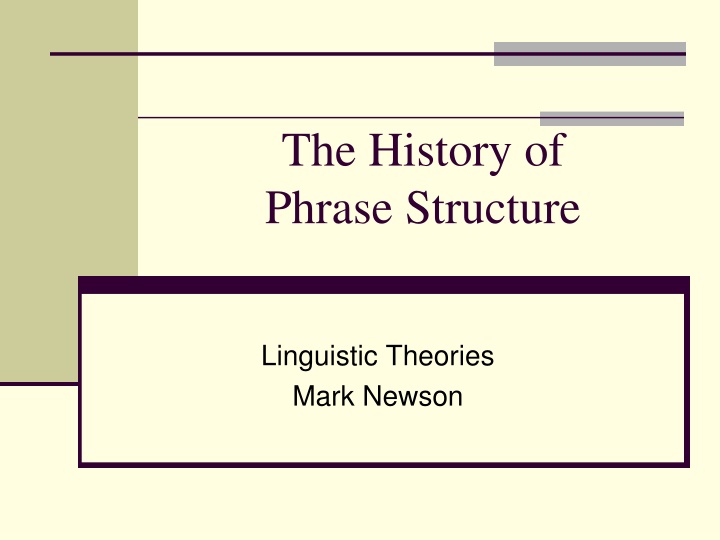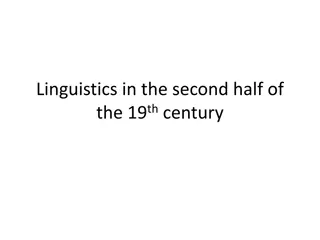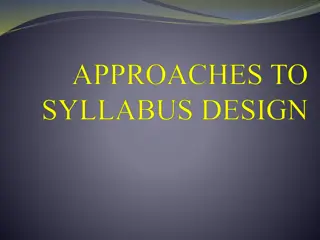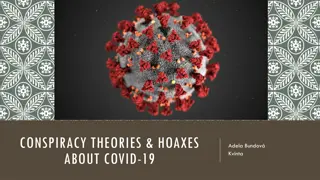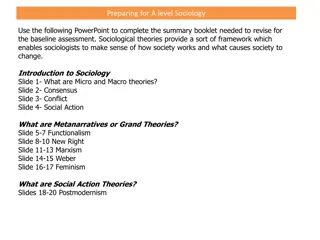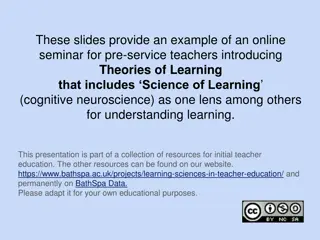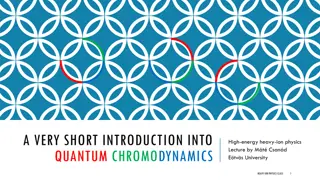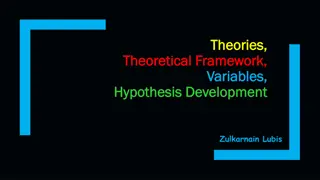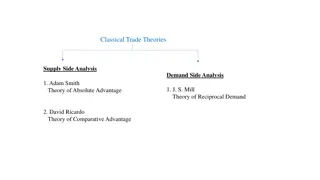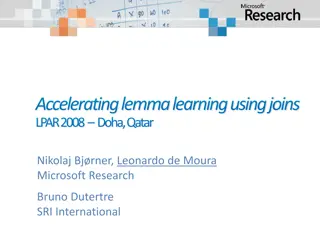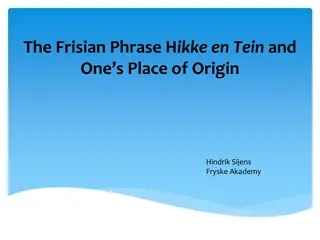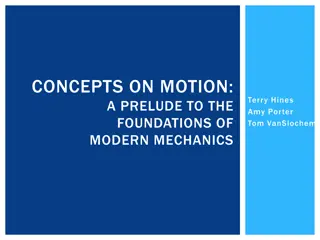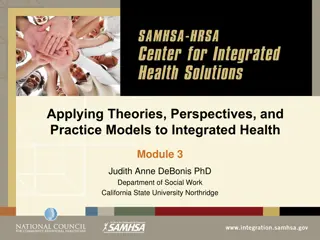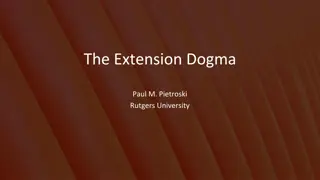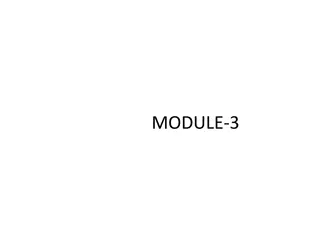Evolution of Phrase Structure Linguistic Theories
Explore the evolution of linguistic theories on phrase structures, from X-bar theory to Generalised X-bar theory in the 1980s. Understand how all phrases contain heads, complement phrases, and specifier phrases, shaping our understanding of language structures.
Download Presentation

Please find below an Image/Link to download the presentation.
The content on the website is provided AS IS for your information and personal use only. It may not be sold, licensed, or shared on other websites without obtaining consent from the author.If you encounter any issues during the download, it is possible that the publisher has removed the file from their server.
You are allowed to download the files provided on this website for personal or commercial use, subject to the condition that they are used lawfully. All files are the property of their respective owners.
The content on the website is provided AS IS for your information and personal use only. It may not be sold, licensed, or shared on other websites without obtaining consent from the author.
E N D
Presentation Transcript
The History of Phrase Structure Linguistic Theories Mark Newson
Current Ideas on Phrase Structure All Phrases look like this: Every phrase contains a word which determines the category of the phrase (= Head); Every phrase has a potential position for another phrase directly associated with the head (= Complement); Every phrase has a second potential position for another phrase more indirectly connected to the head (= Specifier). This is called Generalised X-bar theory.
Heads All words are heads. Every phrase has a head. words and phrases are in a one to one correspondence. Words have categories (nouns, adjectives, prepositions, etc.). The category of the head is the category of the phrase (a noun projects an NP, an adjective an AP, etc.).
Where did this view come from? We can trace the current view to the middle of the 1980s. X-bar theory was generalised to apply to all words. Previously X-bar theory only applied to N, V, A and P. Words like determiners and inflections were not seen as heads. Sentences were not seen as phrases.
Where did this view come from? X-bar theory was invented by Chomsky (1970) (his first version only concerned N, V and A) It was proposed to account for similarities between different phrases: [NPobservation of the rules] [VPobserve the rules] [APobservant of the rules] In all of these phrases, the head (V in VP, N in NP, A in AP) is followed by its complement phrase
Where did this view come from? It also imposed restrictions on phrases: Previously there was no reason why a noun phrase should contain a noun, for example. Some phrases had heads (endocentric). Some didn t (exocentric). So there was no clear notion of what a head is.
Pre-1970 phrase structure rules Grammars were seen as a set of language and construction specific rules. Some of these rules concerned phrase structure (Phrase Structure Rules). NP det N VP V NP S NP VP These rules tell us how to construct phrases: Draw the symbol on the left at the top Draw branches down from this to each of the symbols of the right Put words into the lowest nodes NP det N the students
Where did these ideas come from? Chomsky 1956 Syntactic Structures Invented Phrase Structure Rules and tree diagrams. Formal representation of ideas he was arguing against. These ideas had not been formalised and so were not particularly precise: and therefore couldn t easily be argued against.
Chomskys argument: there is more than phrase structure Discontinuous constituents: That, I like! S NP VP VP V NP NP Pron These rule produce this structure.
Chomskys argument: there is more than phrase structure Discontinuous constituents: That, I like! S NP VP VP V NP NP Pron These rule produce this structure. Other rules could produce this structure But where is the object?
Chomskys argument: there is more than phrase structure Discontinuous constituents: That, I like! S NP VP VP V NP NP Pron These rule produce this structure. Other rules could produce this structure But where is the object? Phrase Structure Rules cannot produce trees with crossing branches.
A slight deception Chomsky argues against Phrase Structure Rules, Which he made up! As a representation of what went before.
So what went before? Later American Structuralism: (Hockett, Harris Chomsky s teacher) Hockett developed Immediate Constituent Analysis: The idea that larger units in a sentence are broken down into successively smaller units. Hockett did not develop rules for this idea (no formalism). He did invent a representation: Chinese Boxes
Chinese Boxes Discontinuous constituents
Chomskys point Because there are no rules, you can do anything with Immediate Constituent Analysis. American Structuralism was not much concerned with explanation. It wanted to describe linguistic phenomena: How we described it was unimportant
Where did Immediate Constituent Analysis come from? Bloomfield (founder of American Structuralism): 1933 Language Contained a chapter on syntax describing phrases. This was a rewrite of a book An Introduction to the Study of Language (1914) Contained the word phrase twice both referring to the notion of an idiom. Conclusion: Bloomfield invented the notion of a phrase sometime in the 1920s
Bloomfields notion of a phrase His discussion of phrases in Language is not particularly detailed. Phrases based on distributional evidence: I m sorry for poor John Poor John has to leave Unlucky though poor John is, I admire him Head also defined in terms of distribution The head of a phrase is that word in it which has the same distribution as the phrase. So John is the head of poor John But to is not the head of to London
Where did Bloomfields notion of a phrase come from? Bloomfield was trained as a linguist in America. Boas was the main influence at the time
Franz Boas German philologist and anthropologist. Worked in America on Amerindian languages and culture. Proponent of Linguistic Relativity: Language systems can only be understood in terms of their own principles can t generalise from one language to another. Urgent need to collect data Development of field methods = discovery procedures: A set of tests for discovering linguistic units (phonemes, morphemes, etc. NOTPHRASES) mainly based on the notion of distribution.
Where did Bloomfields notion of a phrase come from? Bloomfield was trained as a linguist in America. Boas was the main influence at the time Bloomfield studied in Europe (1913-14) Impressed by Wundt
Wilhelm Wundt German psychologist Father of experimental psychology. Wanted to make psychology scientific (experiment based) Thought subjects could be trained to self reflect on mental processes Became discredited in America during the rise of Behaviourism.
Where did Bloomfields notion of a phrase come from? Bloomfield was trained as a linguist in America. Boas was the main influence at the time Bloomfield studied in Europe (1913-14) Impressed by Wilhelm Wundt Bloomfield wanted to make linguistics scientific. Switched to Behaviourism after fall of Wundt
Behaviourism Extreme version of empiricism (operationalism): Only allows ideas based on direct observation. Therefore the mind does not exist. There are stimuli (the observable environment) and responses (visible behaviour).
Bloomfields linguistic behaviourism Only things which are linked to directly observable phenomena can be entertained. Phones are directly observable. Linking comes through discovery procedures (mainly distributional tests) We can discover phonemes by directly examining the distributional behaviour of phones We can discover morphemes by examining the distributional behaviour of phonemes Etc. All this sets up the conditions for the discovery of the phrase: Phrases can be observed by examining the distributional behaviour of groups of words.
Why the phrase wasnt discovered earlier Language has been studied for more than 2500 years. Indian linguistics (before the middle of 1st millennium BCE) Greek linguistics Latin linguistics European linguistics Middle Ages Comparative Lingustics Structuralism
Indian schools of linguistics Most well known work is P nini s grammar (written sometime between 500 and 300 BCE). Was concerned with preserving the Vedic scripts (Sanskrit), used only in religious context. Very limited aims, no comparison with other languages Sanskrit was a highly inflecting, fairly free word order language So concentration was on studying phonology, morphology and meaning, rather than syntax. Highly unlikely to have developed a notion of phrase.
Greek Linguistics Classical scholars (Socrates, Plato and Aristotle) middle of 1st millennium BCE Mainly interested in philosophy Interest in language extended only as far as it impinged on philosophical questions Stoics first real linguistic studies Thrax (about 100 BCE) Only studied Greek No mention of syntax in Thrax s grammar Ancient Greek, like Sanskrit was highly inflectional and had free word order Not likely to find phrases
Latin Linguistics Latin scholars superimposed Greek grammars onto Latin Priscian grammar = Thrax s grammar Did introduce extra chapters on syntax (but misguided ideas about how the natural order of the world imposes order on language) Latin also highly inflected and free word order. Didn t discover phrases.
European Linguistics Scholasticism Based on Christian principles Rejected Greek studies as pagan Linguistics concentrated on teaching Latin (lingua frank, language of Catholic church) Relied on Priscian grammar (ironically) Renaissance Port Royal grammar More theoretical Interest in grammars of current languages But didn t stray too far from standard approach (concentration on phonology, morphology and meaning).
European Linguistics Comparative Linguistics Idea of language families Mostly comparisons of word forms, nothing on syntax European Structuralism Ferdinand de Saussure (1857-1913) Strangely enough, not concerned with structure in syntax Saw language as a system which can only be understood within that system The 9.30 to Paris Not an actual train (could change from day to day) Doesn t necessarily leave at 9.30 (could be late) Doesn t necessarily go to Paris (might break down)
European Linguistics The conditions for none of these schools was right for the discovery of the phrase (despite studying a range of languages with more rigid syntactic structures). No attention to syntactic phenomena Concentration on words and their properties
